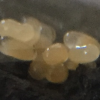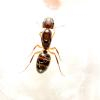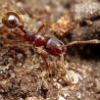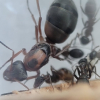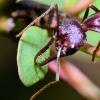I have a question, maybe a stupid one but I can't seem to pin down a straight answer. Hopefully this is the right forum, it is to do with collecting ants.
I have read about gamergates and know that they can lay eggs.
In the absence of a queen the unfertilised eggs will develop into male alates.
My question is : Is it possible to collect worker ants from the genus Myrmecia to found a colony?
Will a gamergate lay an egg that produces a male alate, then will the male alate mate with a gamergate to produce a Queen thus founding a colony?
It seems that this could happen in theory, but does it work in practice?





